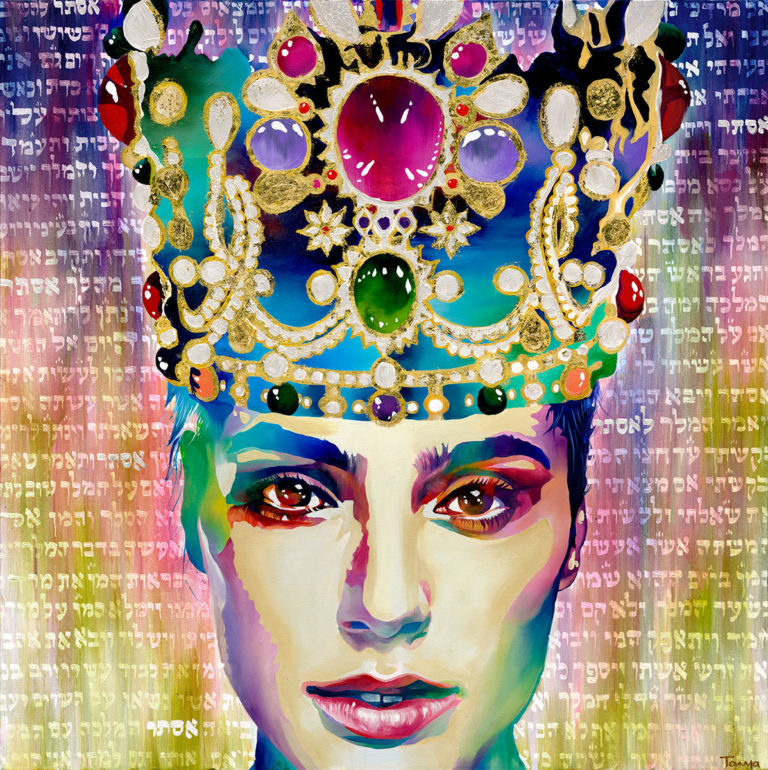
What lesson can Queen Esther teach us about reaching our potential?
The Midrash says:
Rav Akiva was once sitting and expounding, and the public started head-nodding.
He wanted to inspire them, so he said, “What did Esther see, that she would be able to rule over 127 provinces?
Rather, it came to Esther that she was the granddaughter of Sarah, who lived 127 years, and so she [Esther] would rule over 127 provinces.”
This is a strange midrash.
First of all, just to be honest here, as a teacher, it makes me feel better. If people fell asleep on Rabbi Akiva, then maybe I’m not doing so badly.
Paint a vivid picture for the person of where they could be. The potential which is possible for them to reach. We can show them that they can get there. We can explain to them how to stretch and push themselves, so they can reach incredible heights.
Second, he wanted to inspire them. I didn’t know that Rabbi Akiva was in the inspiration business. In the Jewish education world, we often debate the value of inspiration versus education. Is it more important what our students learn or what they feel?
Third, as we say in Hebrew, mah kesher (what’s the connection)? What does 127 years have to do with 127 provinces? Interesting coincidence, but what is the correlation, and how would that inspire Esther or anyone else?
We first have to ask—exactly what is inspiration?
Inspiration is really all about motivating people. Education is information, but inspiration touches on the emotions, which is what turns the information into practice. It is bringing the chochma (raw knowledge) into the place of da’at (application of knowledge through action). So, it seems to me, that without some inspiration, learning isn’t reaching its fullest potential.
How do we inspire the people in our lives and ourselves?
According to Rav Dessler, there are two ways to inspire people.
The first is to show someone the error of their ways. To explain to them how what they are doing is lacking, or dangerous, or not worthy of them. And when they have that clear, it will motivate them to turn things around and make changes.
This method can really work—when you need a push to change something, and someone shows you where you are and where you are headed—it can be a huge wake up call. Like people who don’t quit smoking until someone they love gets sick, or those who don’t stop speaking badly of others until someone explains to them the gravity of lashon hara.
But there is another way.
The second method is to paint a vivid picture for the person of where they could be. The potential which is possible for them to reach. We can show them that they can get there. We can explain to them how to stretch and push themselves, so they can reach incredible heights.
This is the phrase that Chazal say we are obligated to ask ourselves: “When will my deeds reach the deeds of my forefathers?” We are obligated, which means we can actually reach these levels if we keep striving and do not give up.
Let’s return to Rabbi Akiva. He realized that as he was talking about these higher levels—the heights that a Jew can reach—his listeners couldn’t relate. So he decided to bring it down to his students’ level.
Listen again:
Rabbi Akiva wanted to inspire them, so he said, “What did Esther see, that she would be able to rule over 127 provinces?”
What was it that gave Esther the vision and the inspiration to reach incredible heights? What gave her the strength to take on such a great challenge?
“Rather, it came to Esther that she was the granddaughter of Sarah, who lived 127 years, and so she [Esther] would rule over 127 provinces.”
She pondered and thought about Sarah and her righteousness.
We are the daughters of Sarah—and with emunah, we are capable of incredible things.
Not only that, but Esther also realized that Sarah’s life had many parallels to her own challenges:
- Esther found herself in a role of rulership.
Sarah comes from the word sar, which means a ruler/governor.
- Esther was being held captive by a powerful ruler.
Sarah was twice taken by powerful rulers, and yet, she held her ground and remained true to herself.
- Esther was praised for her beauty.
Sarah was one of the most beautiful women to ever live, but she never let her beauty define her.
- Sarah Imeinu was strong and tough and revolutionary. She faced serious challenges, yet she struggled…and then overcame them. Sarah was gevura and malchut. She lived 127 years—in control of every minute of every day of her life. She had powerful emunah.
This incredible powerhouse was Esther’s (great+) grandmother, and her blood was coursing through Esther’s veins. By focusing on Sarah, and painting a vivid picture of the heights she reached, Esther found the strength within herself to connect to her own emunah, to straighten her crown and rule over the known world.
Sisters, we carry this blood in our veins as well. Coursing through each of us is the incredible power of our foremothers. Rabbi Akiva gives us the key—the details in our lives which connect us to our ancestors are there to remind us to reach for their heights. We are the daughters of Sarah—and with emunah, we are capable of incredible things.
But it all depends on where we set our sights—when will our deeds reach the deeds of our foremothers?
When we set our eyes high, straighten our crowns, and reach upward.